On the set of Netflix’s fantasy epic, execs open up about replacing stars, creating visceral worlds and why battles are like ballroom dancing
Sandwiched between a non-descript South Western Rail station and the M3 motorway in Surrey, Longcross South Studios is not the first place that springs to mind when considering Netflix original The Witcher.
Far from the Californian glamour of Los Gatos and LA, the former military testing ground looks incongruent next to the cluster of manicured new-build homes nestled alongside it. Stranger still is the world which is taking shape within the facility’s sound stages and backlots.
The Witcher is among the streaming giant’s most recognisable and lavish franchises, and series four, filmed at Longcross, drops today, 30 October.
Back in summer 2024, Broadcast made the short trip to Chertsey to catch filming. That the tentpole fantasy series is only launching 14 months later – and two years after series three landed on Netflix – is testament to the scale of the undertaking.

“I sold the show in August of 2017 and I’m due to finish the show in the summer of 2026, so it will be nine years of my entire life, which is crazy,” creator, writer, showrunner and exec producer Lauren Schmidt Hissrich tells Broadcast. “Five seasons of a show generally wouldn’t take that long. Covid obviously wrecked all of us, and then the writers’ strike put this season back.”
Like the production timeline, the source material – Andrzej Sapkowski’s nine novels and 15 short stories – is sprawling, a complex universe of lore, lands, monsters and characters, many which have been introduced over the three series so far.
And with the gaps between runs so large, even attentive fans of the show may need to dig into their memory banks to work out who’s who and what’s what as the fourth run begins.
A straightforward way to follow the action is through the storylines of Geralt – the eponymous Witcher (monster hunter); Yennefer of Vengerberg, a powerful mage and Geralt’s on-off romantic interest; and princess Ciri – to whom Geralt is linked by destiny and Yennefer has become a guardian.

Even this simple formula will take some audience adjustment. Henry Cavill, who played Geralt in the first three series, has been replaced by Liam Hemsworth for the final two instalments.
It is a matter Hissrich has had to address repeatedly in interviews since its revelation in 2022, and Broadcast is also inquisitive. Though the decision was “not what any of us expected”, she stresses it was a “choice of changing Geralt or ending the show”.
“When you start a show you never think: ‘If we remove a puzzle piece, can you just slot another one in?’ But no-one wanted to end the show,” she says. “Obviously, it’s a challenge, but the most important thing was for the audience not to feel like we’re pulling the wool over their eyes as if to say: don’t look, just don’t notice that he’s a different person.
“He is a different human being. He has different voice and a different face. I view it as similar to what Marvel and DC do. There are many Batman characters, there are multiple Batmen. To me, it’s an exciting opportunity.”
It is also a key consideration for costume designer Lucinda Wright and hair and make-up (HMU) and prosthetic designer Deb Watson. The switch to Hemsworth has triggered a tweak to Geralt’s clothing – he and Cavill have “very different silhouettes”, Wright explains.
Geralt’s famed silvery-blonde locks do offer an anchor for continuity, but Watson, who with her team has won a Bafta and been nominated for an Emmy for The Witcher’s HMU/prosthetic work, wanted to take it further.
“We’ve got an iconic character, but an iconic character who has already been established on somebody else,” Watson says. “My whole process was to not reproduce that on Liam but talk to him what he wanted to be as Geralt, and see where Lauren wants to take this journey and make the best version of Geralt that we can do within that.”
Hissrich is sold: “Having watched a cut of the first episode, the first time Liam steps up in front of the camera, you’re like: that’s Geralt. And I never thought about it again for the episode. It’s really interesting.”
Watson’s ambition, she says, is to create a “really raw and real world – so the viewer can feel it, smell it and taste it”.
She adds: “I hate watching things where the makeup or the costume or the set doesn’t look real enough, so it jars you out of your story. I want to be sucked into a story.”
Clearly her colleagues have taken the same approach to the vast labyrinth of sets dominating Longcross. The sun-beaten cobbles of a peasants’ market on the back lot give way to the welcome darkness of the sound stages, each housing a purpose-built Witcher location: the ethereal mages’ domain at Montecalvo, the rough-at-the edges brothel, the dark and foreboding study at Nilfgaard where villain Emperor Emhyr var Emreis wants to hold his biological daughter Ciri captive.
Each is meticulous in design – an indoor woodland, scene of one of Geralt’s quests, is complete with actual trees, bushes and soil.
One of the many crew members scurrying around with walkie-talkies, hanging like six-shooters around their waists, is wearing a Lord of the Rings: The Rings of Power t-shirt – maybe streamer fantasy franchise rivalries aren’t as much a concern for below-the-line crew as they are for the c-suite execs?

“We never wanted to be the next Game of Thrones, despite that being an expectation,” says producer Tera Vale Ragan, who has been with Hissrich, and the show, since day one.
It’s been instructive, she says, to have fantasy adaptation comparators such as the HBO titan or Amazon Prime Video’s Lord of the Rings: The Rings of Power, but she adds: “What I enjoy most with The Witcher is it stands alone.
“We don’t take ourselves too seriously and we lean into the dark humour from the books. We’re going to stay true to the tone and keep it as fun and dark with elements of horror. It’s a good combination of different genres and other fantasy streaming shows probably might not have the ability to be as diverse within their tone and material.”
Vale Ragan is speaking in hushed tones because of the proximity to a scene filming a few metres away. The raised voice of an indecipherable crew member, noticeably pinched with frustration and urgency, shouts “let’s roll please” through a megaphone, while another – even more clipped – calls “cameras rolling”.
The hive of activity is such that only snatched conversations are possible with cast members. Anya Chalotra, who plays Yennefer, is whisked away after five minutes from her first chat with Broadcast. When she returns, she also unpacks how the Cavill-Hemsworth switch has altered her approach to Yennefer.
“It’s a completely different energy,” she says. “They both have something special as Geralt and it’s been interesting to figure out where Yennefer and Geralt are in their relationship with Liam.

“[Getting used to the new] intimacy is odd, because I’d built an on-screen rapport with Henry. In those scenes. you have years of working together. But so much has been established [with the characters] so seeing how we do that with Liam is exciting.”
The Witcher, she notes, has been six years of her life – “most of my formative years” – and Yennefer has transcended a role for Chalotra.
“I feel deeply connected to my part. We’ve definitely influenced each other,” she says. “I’ve been able to exercise certain confidence as Anya because of Yennefer, and I think Yennefer’s had to exercise a bit of vulnerability that I have as a person. We’ve shaped each other quite well.” And with that, she’s away again.
Director Tricia Brock apologises between mouthfuls of salad, explaining both her delay in sitting down with Broadcast and her multi-tasking during a brief interlude for lunch. Shooting alongside ongoing construction leaves her with little control over her schedule.
She’s helming block two (eps three and four) of S4, having worked on giant franchises including Netflix sibling Bridgerton and AMC’s The Walking Dead. Given her varied filmography also includes sci-fi, martial arts action series Into The Badlands (AMC) and HBO period drama The Deuce, what does a Tricia Brock Witcher vision look like?
“I don’t know that it’s ever really my vision. My job is to serve the script and the script I’m given is the story I want to tell,” she says. “This is a little bit similar, certainly in scale, to The Walking Dead, and as strange as this sounds, the battle scenes are a lot like the balls in Bridgerton. I’m lucky I’m used to working on cinematic scale.”
She apologises again, because her enthusiastic responses and hasty lunch have brought on a bout of hiccups.
“At times it feels like a mountain that you’re never going to be able to climb,” she continues. “But then, all of a sudden, you’re in the middle of it, it’s happening, and it’s done. I’ve seen some of the battle stuff we’ve shot, and it looks amazing.”
And she too is whisked away.
The Witcher workflow

Hissrich’s office, the biggest of the shipping container block of them at Longcross, is the nerve centre from which this gigantic enterprise flows. Her days usually start around 5.45am.
“I spend the first 20 minutes just looking at my phone, catching up on things, everything that happened while I’ve been sleeping, because we also have a writers’ room going in LA [for S5], so it’s basically a 24-hour operation,” she says.
“Here, there are five producers, and then we have a team of three support staff, and we just work around each other. It’s like Tetris.
“And when I finish my day, I get on the phone or zoom and meet with the room. I try to cap it at an hour or so, because that otherwise it extends my day too long, and at the end of a production day, your creative brain is maybe not in high gear”.
The writing team for S4 includes Hissrich, Tania Lotia, Rae Benjamin, Troy Dangerfield, Matthew D’Ambrosio, Javier Grillo-Marxuach, Clare Higgins and Mike Ostrowski – “my number two”, Hissrich says – who is leading the writers’ room in LA.
Besides Brock, S4 directors are Sergio Mimica-Gezzan, Alex Garcia Lopez and Jeremy Webb and the series is exec produced by Hissrich, Ostrowski, Steve Gaub, Grillo-Marxuach, Tomek Baginski and Jarek Sawko (Platige Films) and Jason Brown and Sean Daniel (Hivemind Content).
“I have a no asshole policy, and I think, in general, it’s a really nice place to work. My methodology has always been to hire talented people I trust and then actually trust them,” Hissrich says.
“A lot of the time leadership falls apart when you say you’re going to hire amazing people and then micromanage every single thing they do.
“I don’t have the time or the brain space for that. I know what my talent is – I write. And then I trust my team to go and do their jobs. I’m not a set decorator, I’m not an actor, I’m not a director, I never want to be, I don’t understand their job at all.”
Veering away from GoT and LOTR comparisons

When it first was commissioned, there was little doubt Netflix wanted The Witcher to be its Game of Thrones, especially with Amazon scrambling to snap up the Lord of The Rings IP to usher forth The Rings of Power.
“I thought about it a lot more at the beginning. And I think it was because we were coming on the heels of Game of Thrones ending,” she says.
And while she’s a fan of Game of Thrones, which has “earned its place in history”, she echoes Vale Ragan when she considers her own show’s place in the pantheon of fantasy franchises.
“[The Witcher] is incredibly different, tonally different and that’s what separates the Witcher from a lot of other fantasy,” she says. “I think fantasy in general is very earnest – you feel the weight of the world on your shoulders every episode.
“As we tried to lean more into the actual stories of the books in series two and three, I felt like we were losing the humorous tone of series one. That’s something this season that’s become really important to us.”
With The Witcher finishing after series five, Hissrich – who has a multi-year, overall deal with Netflix – is starting, slowly, to think about future projects. Within The Witcher universe she exec produced the scripted prequel The Witcher: Blood Origin and anime series The Witcher: Nightmare of the Wolf.
But the exec, whose wider credits include NBC hit The West Wing, Starz franchise Power and Netflix siblings Daredevil and The Umbrella Academy, wants to stay creatively close to her current world.
“The Witcher has changed everything for me,” she says. “It really made me fall in love with fantasy.
“I don’t mean that from here on out I need to run a huge, 800-person behemoth of a show, but it is hard for me to imagine doing anything that doesn’t have an element of fantasy. Story-wise, I’ll want to do something that is a little smaller, a little more focused. There are ways, even in fantasy, to tell those good stories without the price tag that comes with the VFX needed. And that’s what really interests me.”







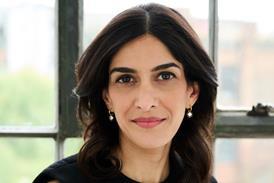
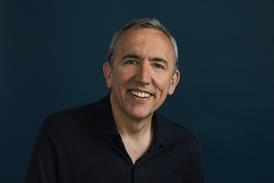
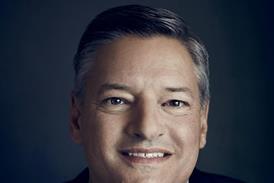
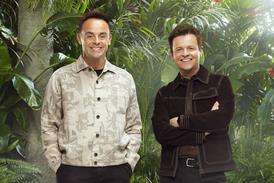
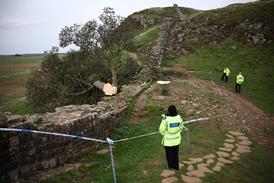
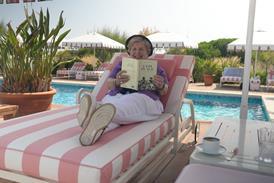
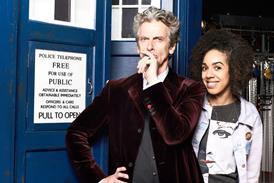
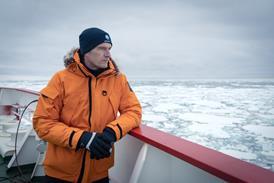
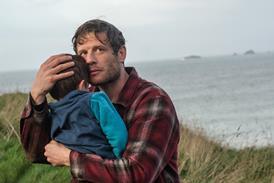
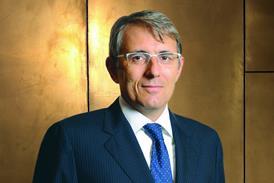

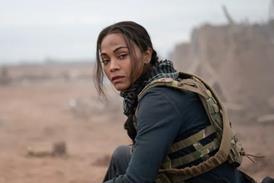

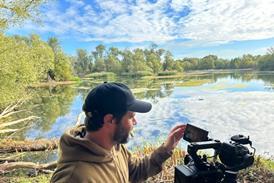
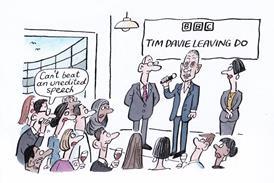
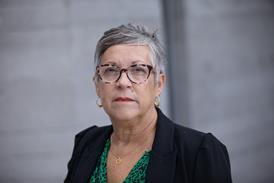







No comments yet